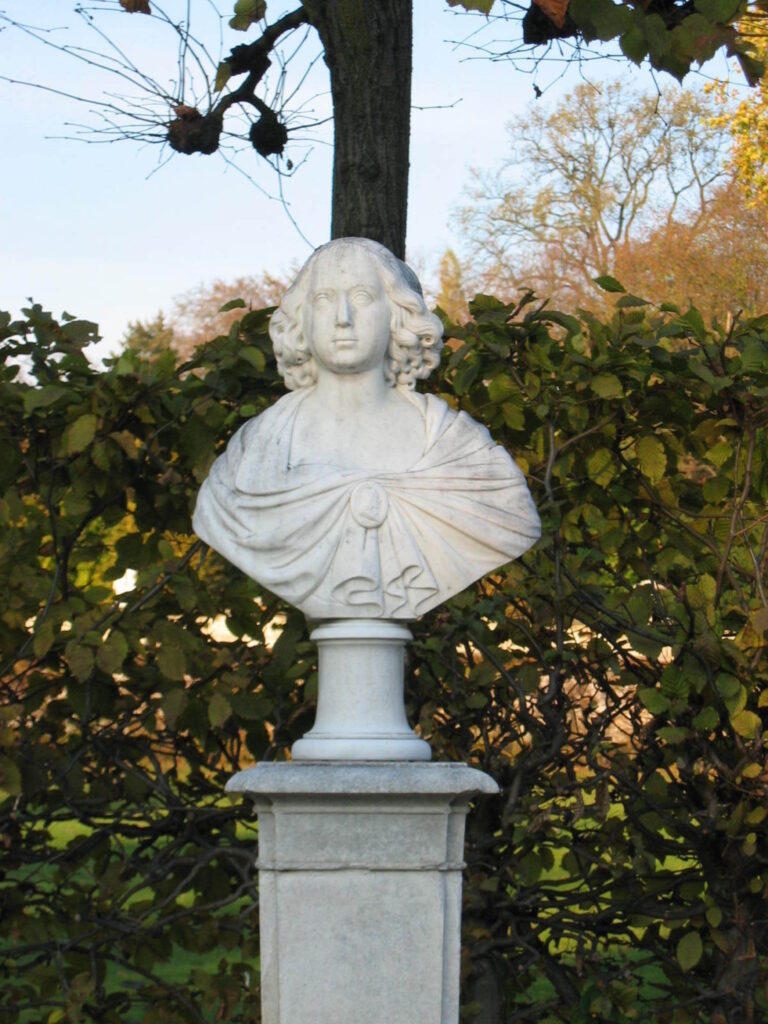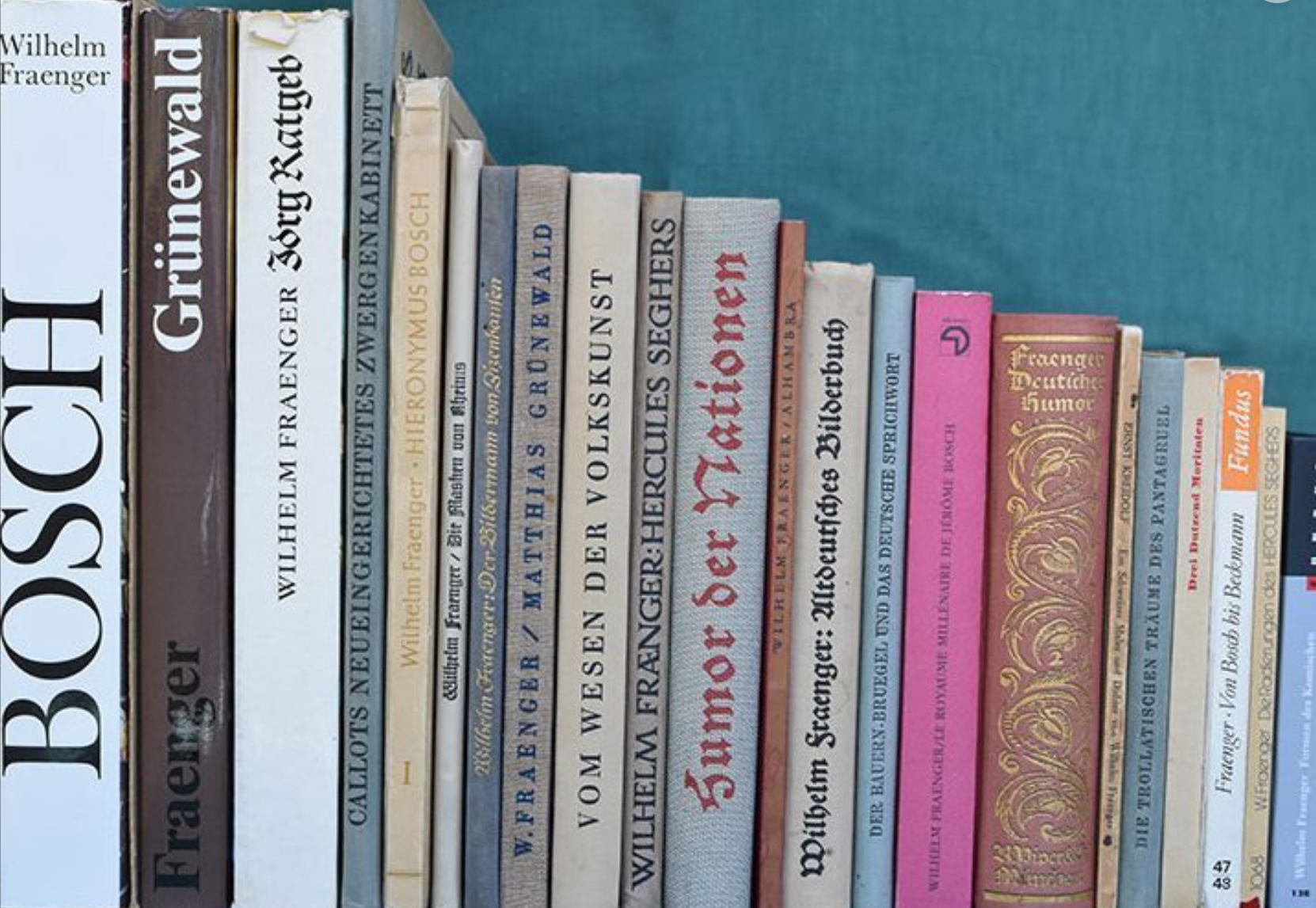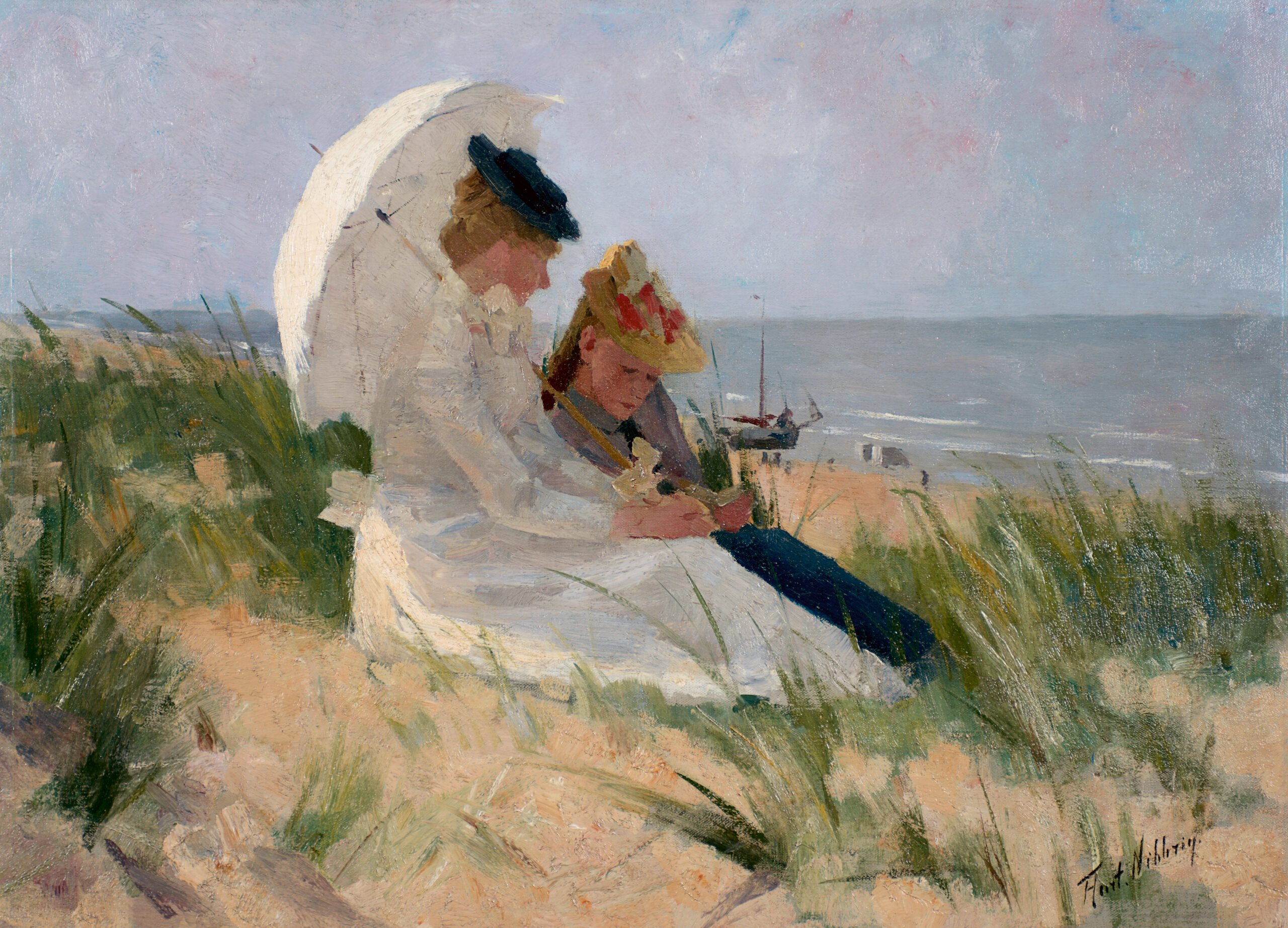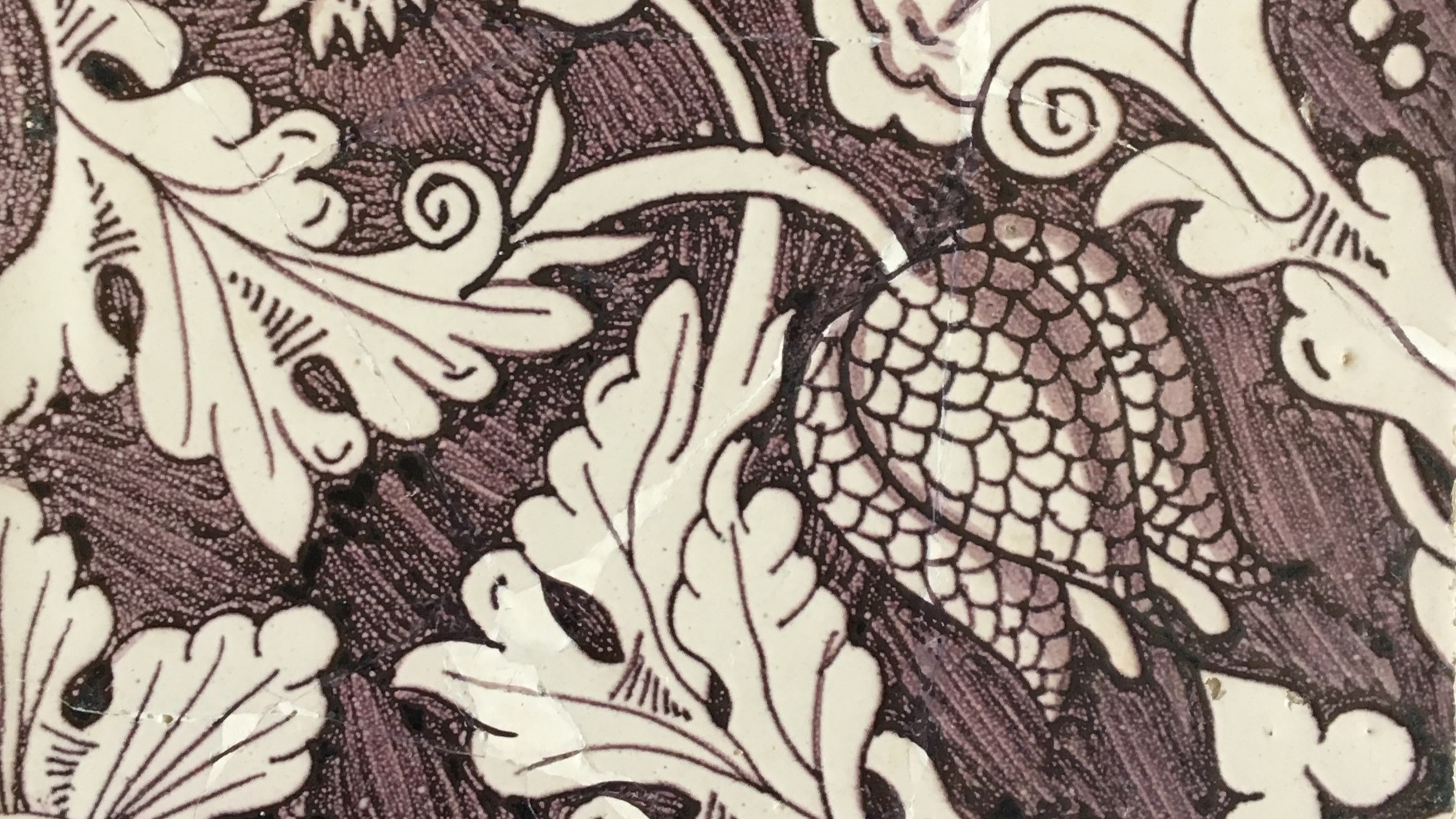
The House of Orange Rondel and the Dutch Garden
Below the Picture Gallery in the Eastern Pleasure Garden is a circular (rondel) area with a fountain basin- encircled by eight marble busts. All of those portrayed are connected with the Orange-Nassau family.
To the right of the Picture Gallery’s central staircase, Louise Henriette (1627‒1667), born Princess of Orange-Nassau, who became Electress of Brandenburg (1627‒1667) in 1646, looks at her husband at her side, the Great Elector Frederick William (1620‒1688). This connection is the basis for familial relations between the Brandenburg Hohenzollern and the House of Orange. Their son, later King Frederick I in Prussia, was the first Hohenzollern to receive the title “Prince of Orange”. After the death of the childless stadholder William III of Orange (1650‒1702), Frederick secured part of the inheritance for himself, as noted below.

The other busts to the right of Louise Henriette represent further members of the family (clockwise): her uncle Prince Philip William (1554‒1618), her brother Prince William II (1626-1650) and his wife Maria Henrietta Stuart (1631‒1660), her mother Amalie of Solms-Braunsfels (1602‒1675), her uncle Prince Maurice (1567‒1625), and finally her father Prince Frederick Henry (1585‒1647).
The Princes of Orange-Nassau exercised royal power as stadholders (governors) of the Dutch Republic. They were representatives of the assembly of the estates in the individual provinces and the Dutch Republic, the Dutch States-General, and leaders of the army and navy. They staged their political influence using means of royal representation and ceremony. Amalie of Solms-Braunsfels, in particular, fervently pursued a marriage strategy for her children aimed at securing European family ties. As the widow of Prince Frederick Henry, she was politically motivated and determined to maintain the power of the House of Orange and hereditary sovereignty. But Amalie also positioned herself as an important patron of the arts, employing, for example, the Wallonian sculptor François Dieussart (1600‒1661) after 1641. In 1646‒47, she commissioned him to create four full-figure statues of the princes of Orange (but instead of Philip William, Prince of Orange, Amalie chose a portrait of his father William I (the Silent)). The statues were installed at the Paleis Huis ten Bosch near The Hague. They came to Potsdam in 1727 as part of the Orange inheritance. They were first set up in the Pleasure Garden and later installed in the Marble Hall at the City Palace. By 1945 the statues were nearly completely destroyed ‒ only a few fragments have resurfaced in recent years. ‒ only a few fragments have resurfaced in recent years.
During long years of apprenticeship and travelling, Dieussart trained as a sculptor, among other places, in Rome with his fellow countryman François Duquesnoy (1597‒1643). Subsequently, the portraits he produced earned him a prestigious reputation at Protestant princely courts in northern Europe. Berlin belongs to the locations the artist made the most impact, in addition to London, The Hague, Copenhagen, Brussels and Bruges. Dieussart began working for Elector Frederick William of Brandenburg in 1648. He stayed at the Berlin court for two years, around 1650, where he made several busts and a marble statue of the Great Elector (1652).

The four original busts of princes included in the Oranierrondell are neither signed nor dated. They were presumably created after the four statues just mentioned. The Great Elector bought them in 1652 from his friend, advisor and the stadholder of Cleves, Prince John Maurice of Nassau-Siegen (1604‒1679), on whose garden grounds in Cleves they had previously stood. The “Italian master Francissen Diesart (?)” is mentioned in the purchase agreement. The location where the Hohenzollern installed the portraits after acquiring them remains unknown. They were first documented under Frederick II of Prussia (1712‒1786). Around 1747‒48, the king used these portraits and four other busts already in the collection to decorate a programmatically laid out rondel below the Picture Gallery in Sanssouci’s Eastern Pleasure Garden. Thus the combination of the portraits of the Princes of the House of Orange with those of Louise Henriette and Frederick William of Brandenburg, Amalie of Solms-Braunfels, and Maria Henrietta Stuart can be traced to Frederick the Great. The latter two works most likely belong to the heirlooms from the House of Orange; Amalie’s portrait was copied by Eduard Stützel (c. 1795‒1862) in 1855. The original is no longer extant. Maria Stuart’s portrait is also attributed to Dieussart.
The portraits of the Brandenburg electoral couple Louise Henriette and Frederick William were made during François Dieussart’s stay in Berlin and are dated 1652. Where the two works were initially installed is unknown. They were replaced by copies around 1902, which, in turn, were placed in storage due to their poor condition. All the busts now on view in the Oranierrondell are modern copies made by various sculptors between 1992 and 1998. Since 1999 the originals have been on display in the House of Orange Hall at Oranienburg Palace, which is primarily dedicated to the early period of the Great Elector and the Electress Louise Henriette, as well as the later era of Frederick I.
– Dr. Silke Kiesant, Kustodin der Skulpturen- und der Uhrensammlung, Stiftung Preußische Schlösser und Gärten
Video Tour of the Dutch Garden
Header Image: House of Orange Rondel and the Dutch Garden in Sanssouci Park │ Photo: SPSG, PMSG, André Stiebitz



